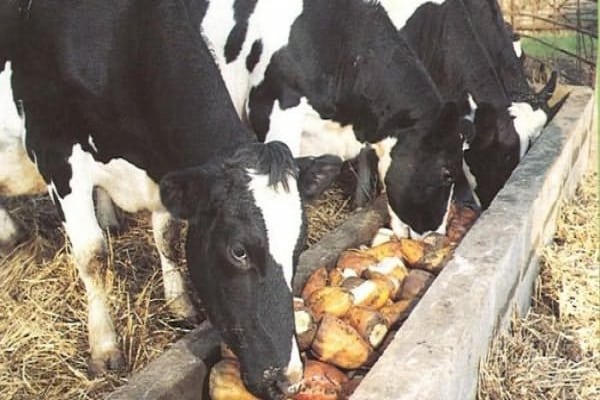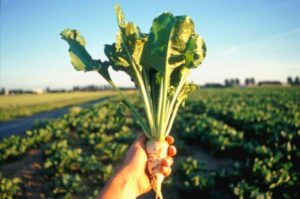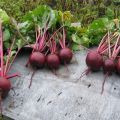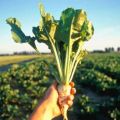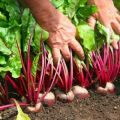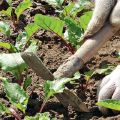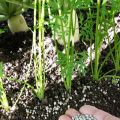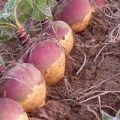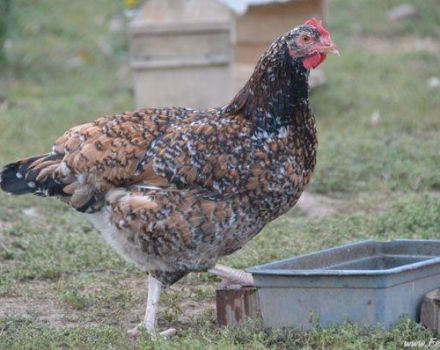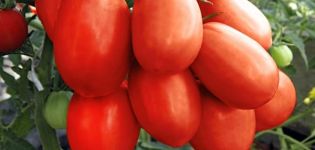Varieties, cultivation and care of fodder beets, its difference from sugar
Fodder beets are the leading household and production-scale cultivated beets. The root crop is an indispensable food for dairy cattle, pigs, rabbits and horses in winter. The culture is rich in fiber, pectin, carbohydrates, mineral salts and protein.
Features of the culture and the difference between fodder beets and sugar
In appearance, fodder and sugar beets are similar. Distinguishing one from the other can be difficult.
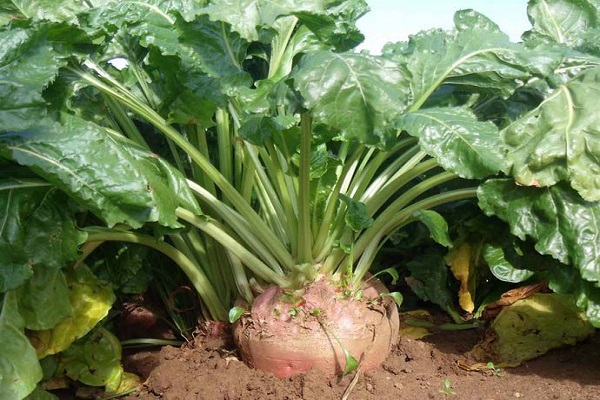
The main difference between the 2 crops is the sugar and protein content, which affects the application. Sugar beets are rich in sucrose, which is washed out of the cake, bleached and crystallized, and the fodder, thanks to the protein, is able to create a complete diet for the animal.
The external differences are as follows:
- Stern has a slightly reddish or orange tint, rounded or oval, dense ovoid glossy tops of 35-40 leaves. During growth, the root crop begins to stretch up and sticks out of the ground.
- Sugar can be white or beige, elongated. The plant has a long green tops of 50-60 smooth leaves on a long cuttings. The fruit is completely hidden underground.
- The planting and growing methods of the 2 crops are also different: the difference is that sugar beets have short roots, and the fodder beet stretches deep into the soil in search of moisture, so that the root can reach 3 m.Therefore, the crop can grow even in arid regions of the country without active additional watering.

Cultivars
There are many varieties of fodder beets, each with its own characteristics and requirements for growing conditions. The most common ones
- Ekendorf yellow fodder beet has a cylindrical shape, protruding by a third from the ground, white juicy pulp. The growth period of the culture is 140-155 days. The variety perfectly tolerates lower temperatures, is undemanding to the soil, is an excellent feed for cattle, as it increases milk productivity.
- The Tsentaur variety belongs to the semi-sugar type, has white fruits of an elongated-oval shape, weighing 1.2-2.7 kg, with a shallow root groove. The plant is undemanding to moisture and soil composition. The root crop sticks out of the ground by 40%, which greatly facilitates the assembly process. The growing season of the Tsentaur variety is 145 days.
- Ursus hybrid beet varieties belong to the semi-sugar multi-sprout type. The plant has a yellow-orange cylindrical root crop, weighing up to 6 kg, more than half sticking out of the ground. Ursus beets are able to grow rapidly even in dry and unfertilized soil.The growing season is 145 days.
- Variety Record is a multi-sprout semi-sugar plant. It belongs to mid-late crops. Beets have cylindrical-conical pink fruits, weighing up to 6 kg and a depth of 40%. The variety is resistant to diseases and keeps well. The growing season of the plant is 145 days.
- The beet variety Kievskaya pink belongs to the multi-sprout mid-season types. The crop has cylindrical-oval orange fruits with a small shallow root furrow, half submerged in the soil. Beets have a high yield. It tolerates drought well and is resistant to pests and diseases.
- Buryak Brigadier is distinguished by oval-cylindrical smooth shiny orange-green fruits, weighing up to 3 kg, with a high sugar content. The variety is drought tolerant and undemanding to the composition of the soil. The growing season is 120 days.
- Lada is a single-sprout fodder beet with a white or pinkish-white oval-cylindrical root crop with a pointed base. Its weight can reach 25 kg. The submergence of the root crop is 40-50%. The plant is resistant to droughts and diseases, it keeps well. The tops remain juicy and green until harvesting, which is important if they are used as raw materials.
- Buryak Nadezhda has a single-sprout seed, a hybrid variety is grown in the conditions of the North-West, Middle Volga and Far Eastern regions. The oval-cylindrical red fruit has a submersion of 40%. It is characterized by high productivity.
- The Milan variety belongs to one-sprout semi-sugar types. Beets grow rapidly in the initial stages, have oval fruits, white below and green above, with a submersion of 60-65%. The plant is distinguished by long-term storage, disease resistance and color.
- Fodder beet Vermont is a hybrid single-seeded variety. The root crop is a cylindrical-conical yellow-orange medium in size.
- Jamon is a single-seeded variety with a cylindrical-conical yellow-orange root crop at the bottom and orange at the top. Differs in average resistance to defeat by cercosporia. Not interested in the root specialist.
- Starmon has a conical root, colored yellow below and green above. The variety prefers loamy, sandy loam fertile soils.

Growing process
Although the fodder crop belongs to unpretentious plants, there are a number of rules, the observance of which will lead to maximum crop yield. It is important in what soil the sowing is carried out, to what depth the seeds are placed, in what number the beets grow and when it is better to fertilize them.
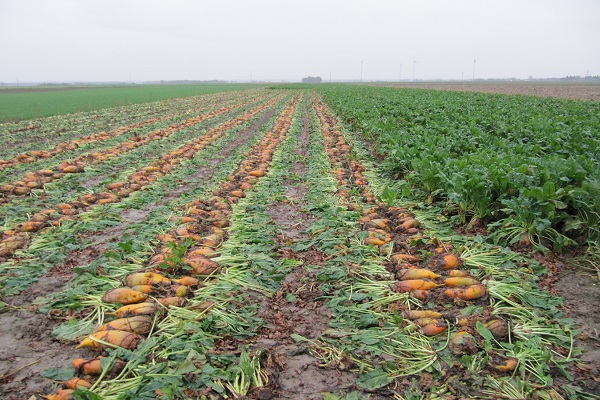
Soil preparation
Before sowing, it is necessary to properly prepare the soil, based on what type it is and what has grown on it before. Cultivation of fodder beets on an agricultural plot that has not been used for several years requires preliminary weed control.
If the soil in the field belongs to black earth, loam or sandy loam, additional fertilizing is not required. In other cases, the cultivation of personal plots implies feeding in the fall, while plowing the land. For this, compost is introduced into the soil in the amount of 35 tons per 1 ha with the addition of 5 centners of wood ash.
Immediately before sowing, the field is plowed again and nitroammofosk is applied in the amount of 15 g per 1 m².
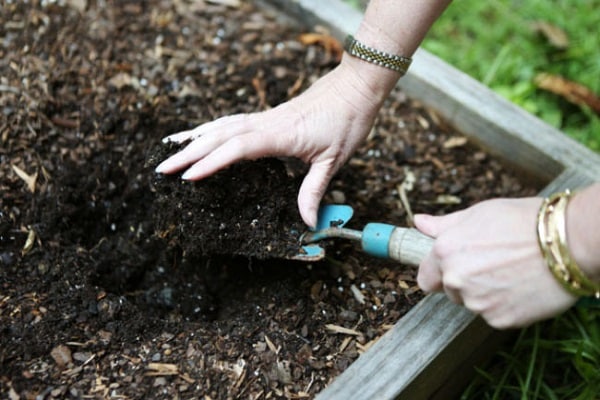
Weed control
Weed control is not limited to just weeding the rows early in the growing season. Treatment with special means is mandatory in order to make the site as clean as possible. This will greatly facilitate the care of the fodder beet and increase the yield.
If weeds of a perennial type grow on the site that is used for sowing, in the fall, treatment with continuous herbicides, such as Hurricane, Buran, Roundup, is carried out in advance.
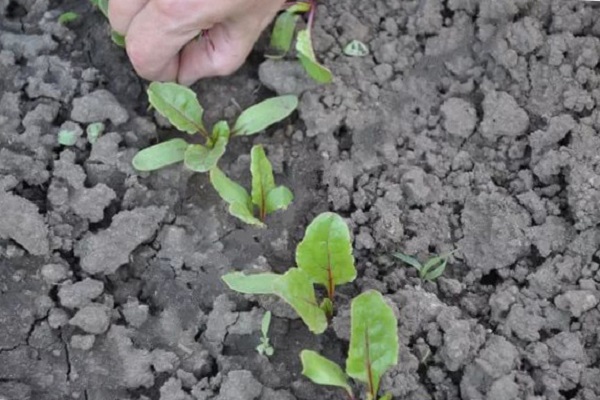
Sowing
The growing season of fodder beets is 125-150 days, so it is necessary to plant seeds in early spring, preferably in the second half of March, when the soil has warmed up enough.
The beet crop is sown in pre-made furrows along the entire length of the plot, at a distance of at least 60 cm from each other. Further, it is necessary to determine in what quantity and how seeds to plant, planting most varieties requires 12-15 g of seeds per 1 running meter (150 g per hundred square meters). The sowing depth is 3 cm with an interval of 25 cm. At the end of the furrow, cover with earth.
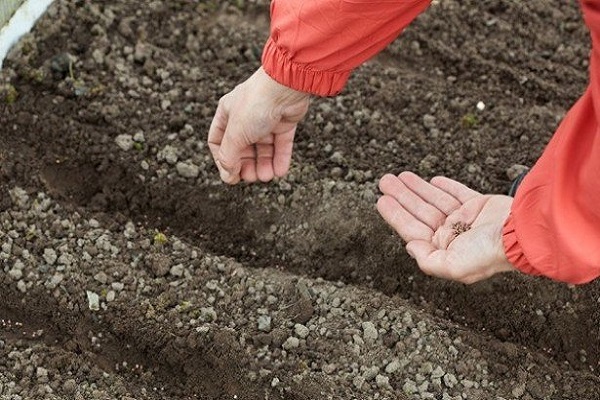
Crop care: agricultural technology
First of all, the care of crops includes high-quality watering, the result of which is the preservation of green and juicy tops for the longest possible period.
If the soil temperature is unstable, a crust may form before the emergence, which should be broken with the rotary hoe, driving the machine across the rows or at an angle of 30-40 °. After the appearance of the first shoots, the first loosening of the row-spacing is carried out to a depth of 5 cm.
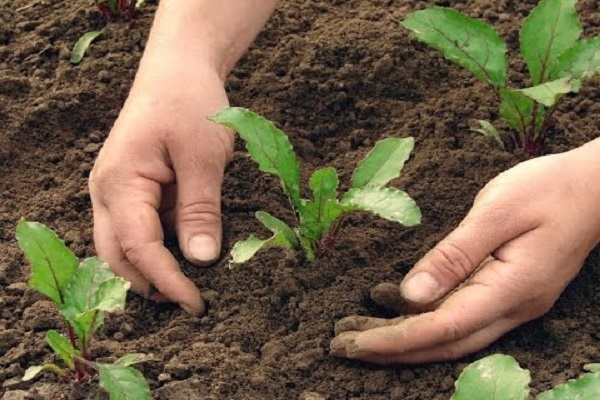
When the first pairs of true leaves begin to form, excess shoots are removed with a cultivator and a long-row thinner.
Immediately after the breakthrough, the row spacing is loosened to a depth of 6 cm, repeating the procedure as necessary until the tops close.
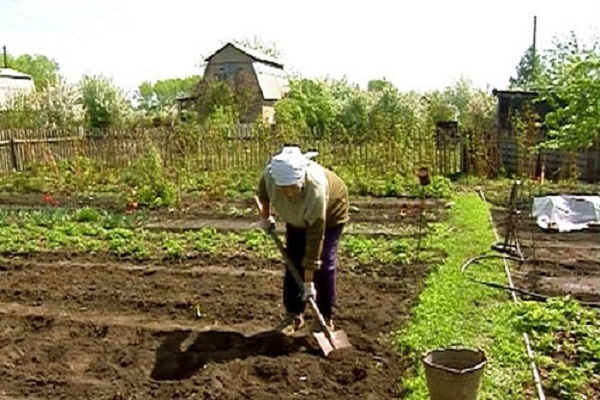
Fertilizers
In order to get a big harvest, it is necessary to feed the beets (how to feed the fodder beets depends on the type of soil and its composition). There are a number of fertilizers that can be fertilized as follows:
- The nitrogen preparation is applied in the amount of 120-150 kg / ha. For the first time, you need to add during pre-sowing soil cultivation.
- Phosphorus and potash are applied during the plowing of the plot in the fall in the amount of 90-120 kg / ha, before sowing seeds - 150-200 kg / ha.
- Boron fertilizers are applied separately or as part of a complex top dressing by foliar application under beets, when 3-4 true leaves have developed on the bushes, in an amount of 180-200 kg / ha.
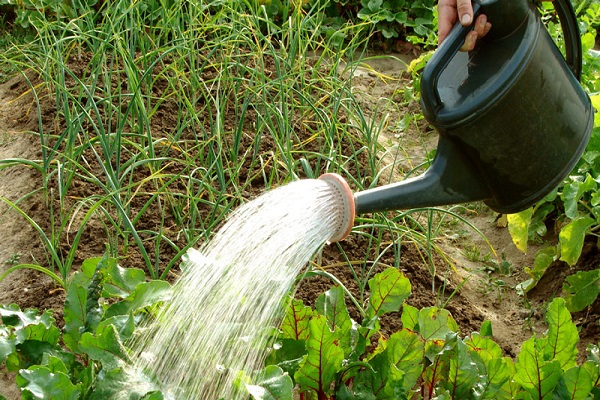
Protecting culture
There are many pests and diseases that affect the fruits and tops of beets. They are not dangerous for the animal when feeding, but can affect the entire field and destroy crops and the adult plant.
During the indicated growth periods, the beets are examined, carefully examining the leaves and fruits. In case of detection of lesions, it is treated with special preparations.
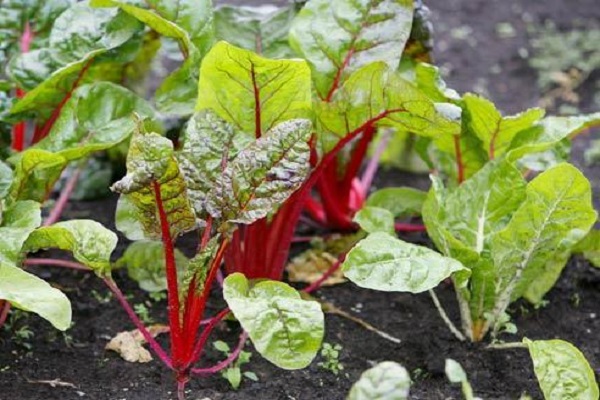
Harvesting
Even a good harvest of fodder beet can be lost if it is not harvested on time, before the temperature reaches +7 ° C. This often happens in late September - early October.
Depending on the area of the site, the collection is carried out manually or using technology. A special harvester or a simple potato digger will do.
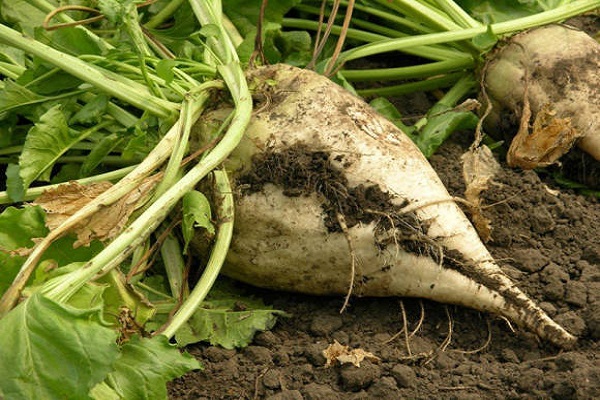
Storage
The fodder crop is stored in special storages, which are equipped with a ventilation system and maintain a stable temperature of + 1 ... + 2 ° С.
On household plots, heaps are organized 3 m wide, 1.5 m high, 25-30 m long. From above they are covered with straw and earth. The cover layer must be at least 60 cm thick.
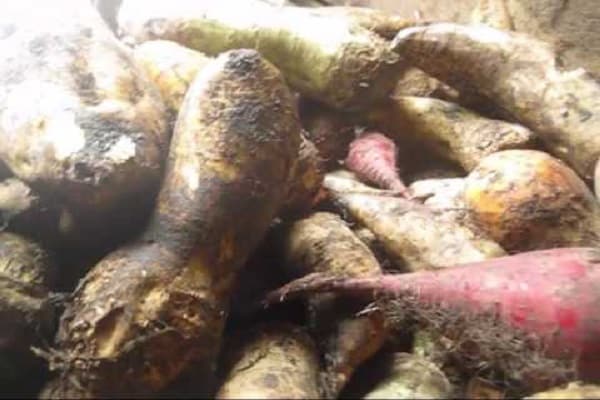
Feeding cows
Before giving the beets to the cows, they are steamed or boiled and allowed to cool. You can not store raw materials after heat treatment. After 5 hours, poisons dangerous to the health of cattle begin to be released in it, the concentration of which reaches a maximum after 22 hours.
